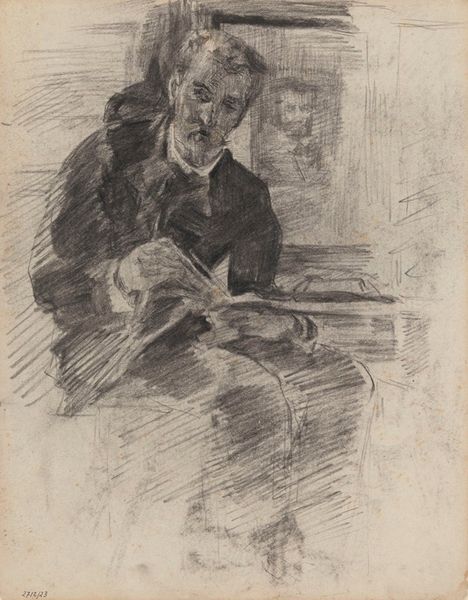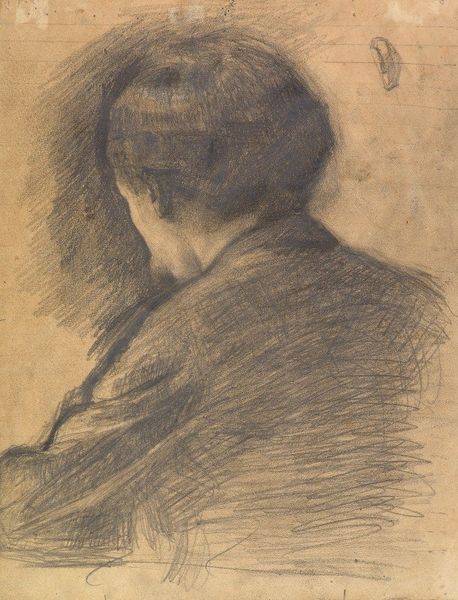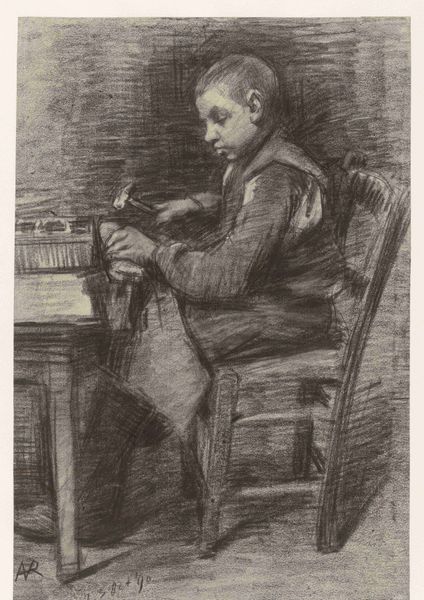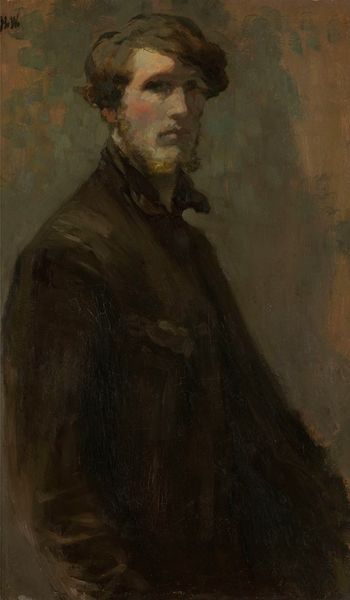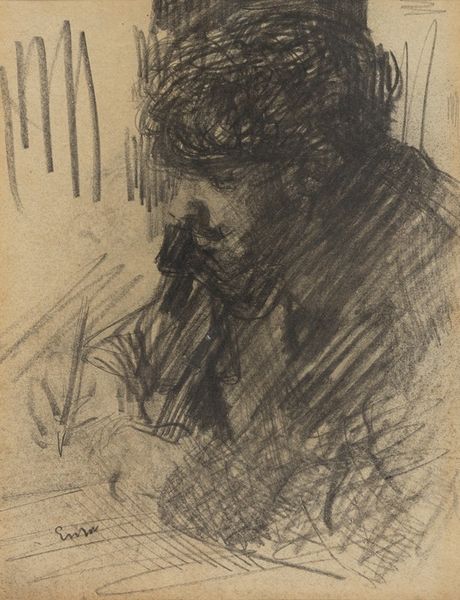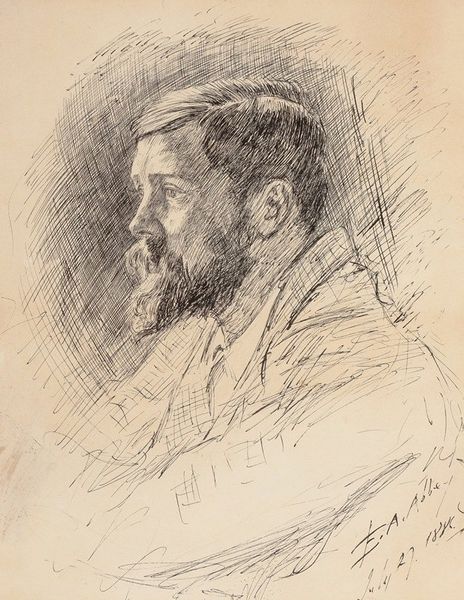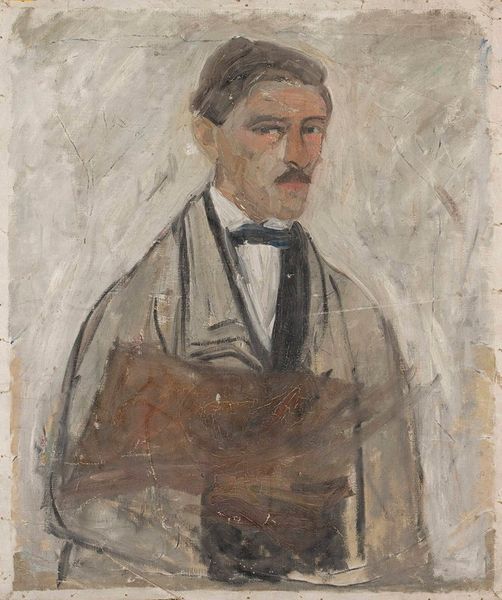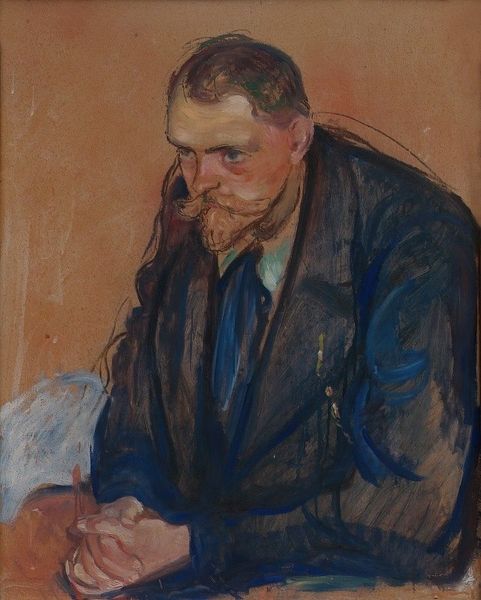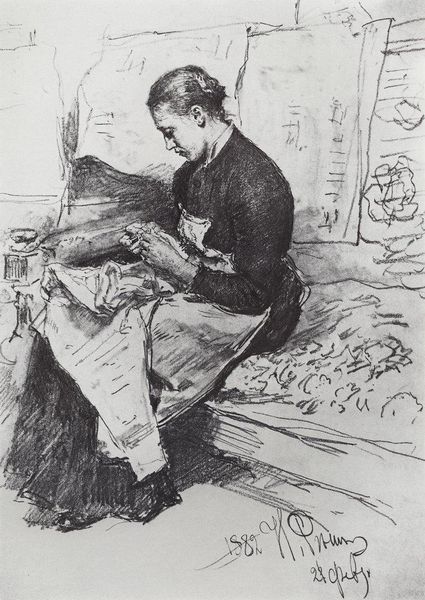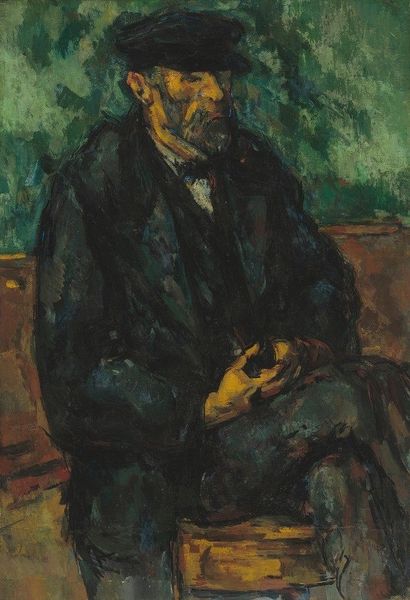
Copyright: Public Domain: Artvee
Editor: So here we have Renoir's "Pierre Renoir lisant," painted around 1898, made with oil paint in a seemingly plein-air setting. The first thing that strikes me is how quickly it must have been painted—it looks so spontaneous and a bit unfinished. What draws your eye when you look at it? Curator: What fascinates me is precisely what you pointed out—the rapid, almost casual application of paint. Consider the economic realities: who has the time and resources to depict leisure? Pierre, presumably the artist's son, embodies a certain social class allowed such moments. But let's dig deeper into the "how." Editor: So you mean how Renoir’s technique also speaks to class dynamics, beyond the subject matter? Curator: Exactly. The visible brushstrokes, the lack of precise detail – these aren't accidents. They are choices made possible by Renoir's access to materials and a market receptive to this "unfinished" style. It’s not just a portrait, it's a document of production. Look at how the raw canvas itself peeks through. Is it "unfinished", or is it deliberately highlighting the material reality of painting? Editor: I see what you mean. The roughness seems to reject the smooth polish that was valued in earlier academic painting. Curator: Precisely! Renoir is showcasing the materiality, making the viewer conscious of the labor and resources that go into even a seemingly effortless image. This changes how we consume the image. It is an image of leisure, yes, but its construction speaks volumes. Editor: That really makes me look at it differently. It’s easy to get lost in the "impression," but it is useful to remember how class and production shaped what was even possible. Thank you! Curator: A valuable thing to always keep in mind when assessing art!
Comments
No comments
Be the first to comment and join the conversation on the ultimate creative platform.
